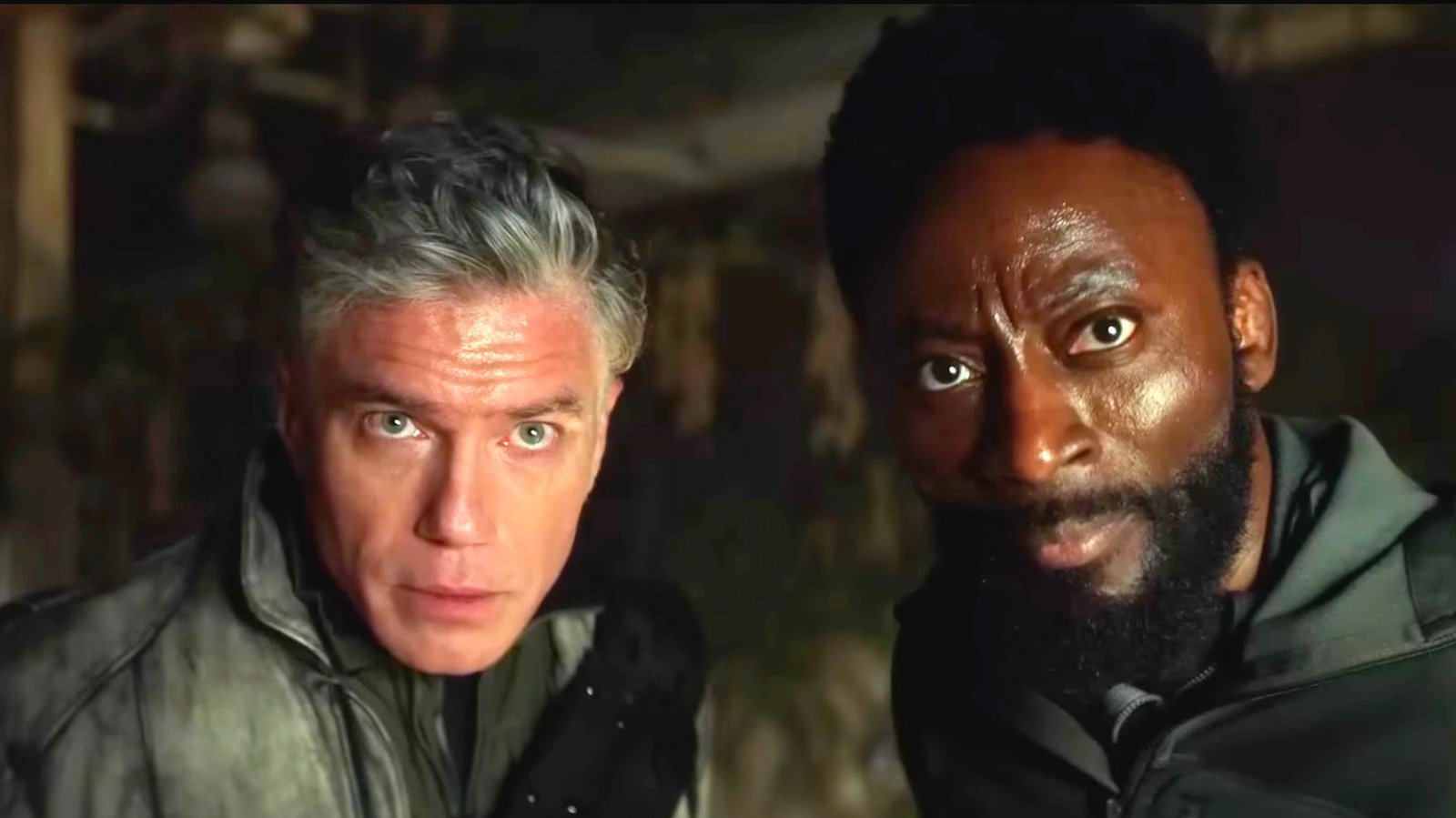
Pike and M’Benga get locked inside the abandoned outpost, sieged by a horde of zombies trying to get inside. One of the Klingons hunting the pair is swarmed by the zombies, torn apart, and devoured. (I can’t imagine the Klingons consider that an honorable way to go.)
Ever since George Romero’s “Night of the Living Dead” turned zombies into go-to movie monsters, their onscreen portrayals have varied. The Kenfori-zombies are the fast-moving kind, not lumbering dullards. Tying their origin to plants also feels pulled from “The Last of Us.” In that video game/TV series, the zombies aren’t actually undead. Instead, the story suggests what would happen if the real cordyceps fungus evolved from possessing ants to possessing human beings. The set for the abandoned outpost on Kenfori, filled with plant growths containing half-devoured human remains, resembles both “The Last of Us” and Alex Garland’s sci-fi film “Annihilation.”
The existence of movies in the future of “Star Trek” is contentious. By the 24th century, cinema appears to have lost any cultural relevance in favor of the holodeck’s interactive storytelling.
Given Pike and M’Benga’s familiarity with “the Z-word,” one has to assume that zombie movies (or at least books) still exist in the 23rd century, though. “Star Trek: Enterprise” showed that, at the very least, humans are still watching James Whale’s “Frankenstein” movies in the 22nd century. Are they still watching George Romero pictures in the 23rd?
Wherever Pike and M’Benga learned about zombies, it wasn’t from their “real” world. Yes, somehow, “Star Trek” has never done proper, undead zombies before. The franchise has done vampires, witches (“Catspaw”), and even devils (“Devil’s Due”), but not zombies. The closest thing to zombies in “Star Trek” before “Shuttle to Kenfori” was in the “Enterprise” episode “Impulse.” In that episode, the Enterprise NX-01 crew comes across a wrecked Vulcan ship, the Seleya. The ship discovered a mineral, trellium-D, that is toxic to Vulcans, making them less intelligent and violent. When the Enterprise gets to the Seleya, the crew have degenerated into an unrelenting horde.
Like how “Shuttle to Kenfori” seems influenced by “The Last of Us,” “Impulse” (which aired in 2003) nods to the then-recent “28 Days Later” with its fast zombies that aren’t actually zombies, just people infected by a “rage virus.” “Star Trek” has and always will be set in the future, but it connects its audience to the future by drawing on their present. You can track that by which movies which “Star Trek” series chooses to homage.
“Star Trek: Strange New Worlds” is streaming on Paramount+, with new episodes of the ongoing third season premiering on Thursdays.
